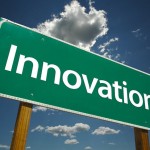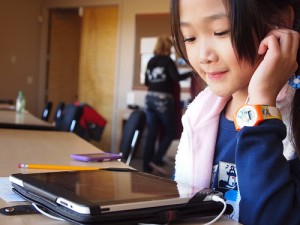Thoughts on Defining Innovation in Education

I’ve been doing some thinking about how to best define innovation in education. I’ve been reading a lot of mission statements lately for schools and districts and keep finding the word “innovative” used, yet little sign of practices in the objectives, tactics and goals to back this up. The tactics and action plan seem to be oriented towards producing test scores and the practices seem 20th century at best.
If Business Innovation is defined this way:
The process of translating an idea or invention into a good or service that creates value or for which customers will pay.
…does this definition for education innovation follow?
Implementation of a new design, process, idea, or learning environment that increases an individual student or group of students’ ability to learn, as evidenced by their ability to make meaning and transfer.
Then I started translating additional parts of the business innovation definition for education this way:
Business: Innovation involves deliberate application of information, imagination and initiative in deriving greater or different values from resources, and includes all processes by which new ideas are generated and converted into useful products.
Tools and ideas to transform education. Sign up below.
Education:
Innovation involves deliberate application of information, imagination and initiative in deriving greater or different values from resources
This could be resources of time or people as well as money.
In business, innovation often results when ideas are applied by the company in order to further satisfy the needs and expectations of the customers.
In education, innovation often results when ideas are applied to satisfy the needs and expectations of the students.

CC Photo by Brad Flickinger. Available http://www.flickr.com/people/56155476@N08/
This is a powerful statement when you think about it –do we intentionally design and plan for the needs of the students? The individual student? How do we know what those needs are? Do we go beyond test scores and consider the whole child when determining those needs? Their learning style? Their 21st century skills? At what point do we address the individual student needs in the backwards planning process? There is an obvious connection to personalized learning here. Universal Design for Learning offers a framework that provides one possible approach.
I continued reading and translating the Business Dictionary.com article for education:
In education, innovation helps create new methods for collaboration, interdisciplinary learning, flexible time , and flexible learning environments. Innovations are divided into two broad categories:
- Evolutionary innovations) that are brought about by many incremental advances in technology or processes and
- Revolutionary innovations which are often disruptive and new.
Innovation is synonymous with risk-taking and organizations that create revolutionary changes in services and learning environments take on the greatest risk.

Given this definition, is your classroom, school, or district innovative?
cross posted at Innovations in Education
Nancy White is the 21st Century Learning & Innovation Specialist for Academy School District 20, providing professional development on 21st century skills and technology integration, and working with the IT-ES team to carry out the district’s 21st Century Learning Plan. Nancy served on an ad-hoc team to help with the integration of 21st century skills into Colorado’s revised content standards, and co-authored The Colorado Learner’s Bill of Rights. Read more at Innovations in Education.
